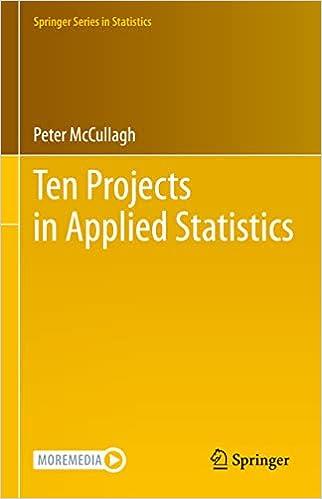For integer (n geq 1), a partition (B) of the set ([n]={1, ldots, n}) is a set
Question:
For integer \(n \geq 1\), a partition \(B\) of the set \([n]=\{1, \ldots, n\}\) is a set of disjoint non-empty subsets called blocks whose union is \([n]\). A partition into \(k\) blocks, can be written as \(B=\left\{b_{1}, \ldots, b_{k}ight\}\), with the understanding that \(B\) is a set of subsets, not a list of subsets. For example, 12|34, 13|24, 14|23 are distinct partitions of [4] into two blocks of size two, and these are the only partitions of type \(2+2\). Equivalently, \(B\) is an equivalence relation \([n] \times[n] ightarrow\{0,1\}\), reflexive, symmetric and transitive. Let \(\mathcal{P}_{n}\) be the set of partitions of \([n]\). List the elements in \(\mathcal{P}_{n}\) for each \(n \leq 5\), and show that \(\# \mathcal{P}_{1}=1, \# \mathcal{P}_{2}=2, \# \mathcal{P}_{3}=5, \# \mathcal{P}_{4}=15, \# \mathcal{P}_{5}=52\). These are called the Bell numbers.
Step by Step Answer:






